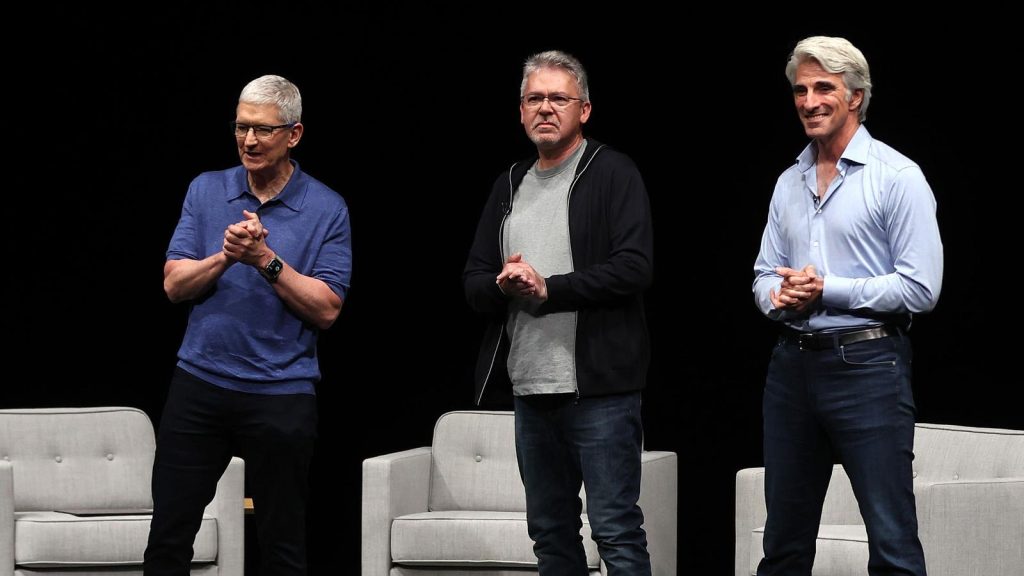Updated July 19 with details on reduced orders in the iPhone 16 supply chain.
CUPERTINO, CALIFORNIA – JUNE 10: (L-R) Apple CEO Tim Cook, Apple senior vice president of machine … [+]
With demand for Apple’s iPhone slowing down, how will Tim Cook and his team lure consumers to its ecosystem? Data from analysts CIRP show that demand for the iPhone —specifically the current iPhone 15 model—is lower than that of the iPhone 14 in this quarter. This echoes the pattern of lower demand seen in Q1 2024.
Update: Friday July 19: While there is talk of an artificial intelligence boom when Apple launches its generative AI-capable iPhones, that talk is not yet reflected in the supply chain. Two major component manufacturers in the supply chain are not expecting growth due to increased orders.
Analyst Ming-Chi Kuo reports on earnings calls from TSMC and Largan, and their forecasts for the coming year are similar to last year.
“My understanding is that some suppliers have seen an increase in iPhone 16 orders for 2H24, but from the EMS/assembly perspective, the iPhone 16 orders for 2H24 have not seen much change (about 87 million units), still slightly lower than the 2H23 iPhone 15 orders (about 91 million units).”
With Apple the biggest player in this market, any increased order to cover the upcoming iPhone 16 family would positively impact their projections. As it stands, it’s the same story as 2023; solid sales but nowhere close to unlocking an untapped market thanks to AI.
Attendees look at the brand new Apple iPhone 15 during an Apple event on September 12, 2023 (Photo … [+]
The report also highlights one way Apple is hoping to turn around sales. But it’s a gamble that asks for patience from the fickle smartphone market.
Apple will be looking towards one key factor in the iPhone 15 family, which is already accelerating Android sales. Generative AI has transformed the view of what a smartphone can offer consumers, from editing photos and videos, through summarising and analysis of text and images, to assisting creativity.
Following the announcement of Apple’s AI plans at June’s Worldwide Developer Conference, shares in the company rose seven percent, primarily on the promise of increased iPhone sales. Because of the high demands generative AI places on hardware and Apple’s push to process as much user data on the user’s device as possible, Apple Intelligence will only run on one existing iPhone model—the iPhone 15 Pro Max.
Consumers without the most expensive iPhone on the market will need to buy the latest iPhone hardware to access the A18 Pro chip specifically designed to support generative AI routines.
Yet the AI that the iPhone is clearly lacking right now will not be available until the first quarter of 2025. Tim Cook and his team will be asking the Apple faithful to buy the smartphone on the promise of receiving the AI at some point in the future.
Meanwhile, all of those benefits are available on Android and have been since Google introduced the idea of an AI-first smartphone in October 2024 during the Pixel 8 launch. With Google’s Pixel 9 family due to be announced in August, Apple’s iPhone will be two generations behind Android’s AI efforts before it has even left the Cupertino stage.
Will consumers be happy to wait for Apple to catch up to the competition, or will they decide that the AI revolution cannot wait? If it’s the former, then Apple’s decision to “go long” should help revitalise sales of the iPhone. But if it’s the latter, the Android ecosystem may have just found Tim Cook’s Achilles heel.
Now read more about Apple’s iPhone 16 and iPhone 16 Pro launch plans…
